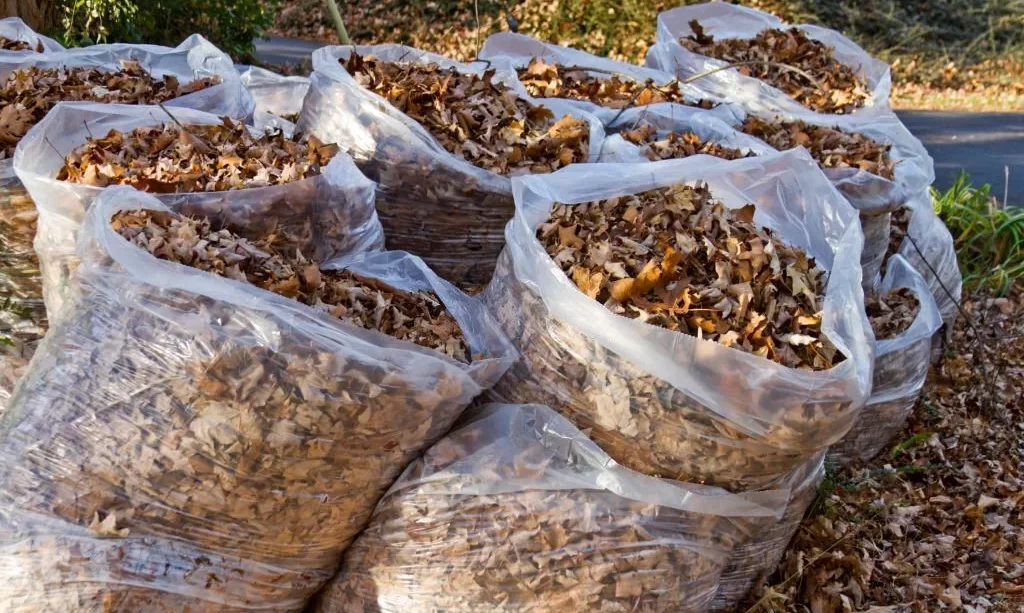Composting is like magic for your garden. It takes kitchen scraps, yard waste, and a bit of know-how to transform them into nutrient-rich soil that makes your plants thrive. But have you ever wondered about those majestic oak trees in your yard and the heaps of leaves they drop every fall? Are oak leaves good for composting? The short answer is yes, and in this guide, we’ll dive into why oak leaves can be a fantastic addition to your compost pile. These robust, broad leaves may seem a bit tough to break down, but they bring a unique set of benefits that can give your compost a powerful boost. Let’s unravel the secrets of oak leaves in composting and see how they can help you grow the garden of your dreams.
- Contains Beneficial Bacteria Cultures That Accelerate The Natural Composting Process
- Converts Yard Waste To Fertile Humus In 30 Days
- Each Dissolvable Packet Treats 9 Cubic Feet Of Compost
- Brand Name: Greenpig Solutions
Benefits of Oak Leaves in Compost
When it comes to composting, not all leaves are created equal, and oak leaves have their own special charm. Oak trees, with their towering presence and sprawling branches, produce leaves that are different from many others in your garden. These leaves offer several key benefits when added to your compost:
- Rich Carbon Source: Oak leaves are carbon-rich, which is essential for balancing your compost’s carbon-to-nitrogen ratio. This balance ensures that the microorganisms responsible for decomposition have the right environment to thrive.
- Slow Decomposition: Unlike some leaves that break down quickly, oak leaves decompose slowly. While this might seem like a drawback, it’s actually beneficial because it helps maintain good aeration within your compost pile, preventing it from becoming too compacted.
- Natural Acidity: Oak leaves are slightly acidic. This acidity can help counteract the alkaline nature of certain kitchen scraps like eggshells and coffee grounds, resulting in a more balanced pH level in your compost.
These advantages make oak leaves a valuable addition to your composting arsenal. Now, let’s explore how to harness these benefits effectively in the composting process.
Preparing Oak Leaves for Compost
Before you toss those oak leaves into your compost pile, a little preparation can go a long way in ensuring they break down effectively. Here’s how to get your oak leaves ready for composting:
- Collect Clean and Dry Leaves: Start by gathering oak leaves that are clean and free from any contaminants like mold or mildew. Dry leaves are easier to handle and shred, so wait until they’ve had a chance to dry out a bit after falling from the tree.
- Shredding or Chopping: Oak leaves, with their sturdy texture, benefit from shredding or chopping into smaller pieces. This step accelerates decomposition, as it exposes more surface area to the microorganisms that do the composting work.
- Mix with Nitrogen-Rich Materials: Oak leaves are high in carbon, so balance their contribution by mixing them with nitrogen-rich materials. This can include kitchen scraps like vegetable peels or grass clippings. The ideal ratio is roughly three parts brown materials (like oak leaves) to one part green materials (like kitchen scraps).
By following these steps, you’ll set the stage for oak leaves to become a valuable component of your compost pile.
Composting Dos and Don’ts with Oak Leaves
Now that you’ve prepared your oak leaves, it’s time to delve into the dos and don’ts of composting with them:
Dos:
- Maintain the Right Ratio: Keep the carbon-to-nitrogen ratio in check by adding enough nitrogen-rich materials to balance the oak leaves’ carbon content. This ensures efficient decomposition.
- Regular Turning: Turn your compost pile regularly to aerate it. This helps prevent the pile from becoming too compacted, ensuring good airflow for decomposition.
- Monitor Moisture Levels: Keep your compost pile consistently moist but not soggy. Oak leaves, with their slow decomposition, require adequate moisture to break down gradually.
Don’ts:
- Avoid Diseased or Pest-Infested Leaves: Don’t add oak leaves that show signs of disease or are infested with pests. This can introduce problems into your compost pile and potentially harm your garden.
- Don’t Rely Solely on Oak Leaves: While oak leaves have their benefits, don’t use them exclusively in your compost pile. A diverse mix of materials, including kitchen scraps, yard waste, and other leaves, will create a more balanced and nutrient-rich compost.
By following these dos and don’ts, you’ll ensure that your oak leaves contribute effectively to your compost pile, resulting in nutrient-rich compost that will work wonders for your garden.
Troubleshooting Oak Leaf Compost
Composting with oak leaves is generally rewarding, but occasionally, you may encounter challenges. Here’s how to troubleshoot common issues:
Common Issues:
- Slimy or Smelly Pile: If your compost pile becomes slimy or emits a foul odor, it’s likely too wet or lacks adequate aeration. To remedy this, add more dry materials, like shredded newspaper or cardboard, and turn the pile more frequently to improve airflow.
- Slow Decomposition: Oak leaves decompose slowly, and sometimes the process may seem too sluggish. To speed things up, ensure you have the right balance of carbon and nitrogen materials. Adding more nitrogen-rich materials or using a compost activator can help.
Using Oak Leaf Compost
Now that your oak leaf compost is ready, it’s time to reap the rewards in your garden. Here’s how to make the most of it:
- Soil Enrichment: Incorporate your oak leaf compost into your garden soil to improve its structure and fertility. This nutrient-rich compost will enhance soil health and provide essential elements for plant growth.
- Mulch: Spread a layer of well-rotted oak leaf compost around the base of your plants. This acts as a natural mulch, helping to retain moisture, suppress weeds, and regulate soil temperature.
- Container Gardening: If you have potted plants, mix some oak leaf compost into your potting soil to provide a steady source of nutrients throughout the growing season.
- Compost Tea: You can also create a compost tea by steeping a bag of compost in water and then using it to water your plants. It’s a nutrient-rich liquid that can give your plants a boost.
Conclusion
In the world of composting, oak leaves might appear as slow and sturdy players, but they bring unique advantages to the table. Their carbon-rich composition, slow decomposition rate, and natural acidity make them a valuable addition to your compost pile. By following the right steps to prepare and balance them with nitrogen-rich materials, you can turn oak leaves into a powerful soil enhancer.
Troubleshooting any issues, such as excessive moisture or slow decomposition, ensures that you make the most of your oak leaf compost. Once ready, this nutrient-rich treasure can be used to enrich your garden soil, serve as mulch, benefit container plants, and even create compost tea for your plants’ delight. So, embrace the potential of oak leaves in your composting journey, and watch your garden flourish with the benefits they bring. Happy gardening!




